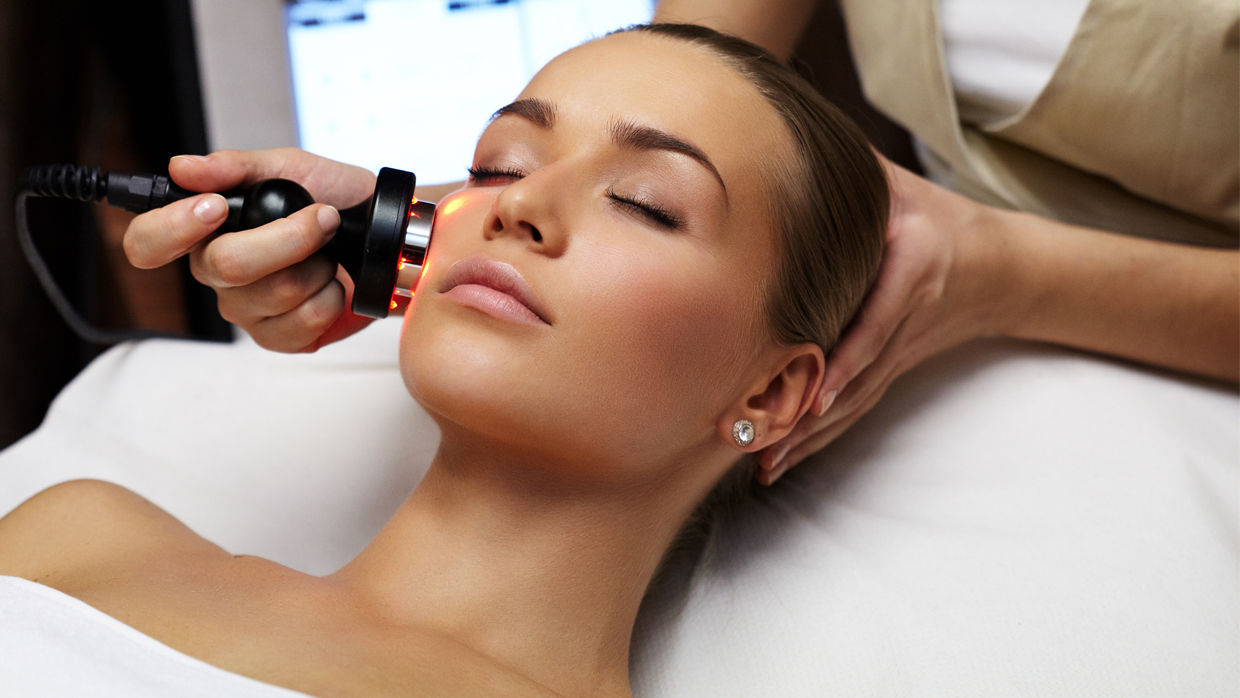Just what are Skin Lasers? Laser skin therapies are a safe, effective & the best non-surgical treatment technique for dealing with diverse skin disorders and conditions, expanding from anti-aging (making skin more youthful), pigmentation removal (melasma treatment), hair removal, skin open-pore treatment, wrinkle elimination, tattoo removal, fine line elimination, removal of vascular skin lesions (like strawberry nevus & capillary hemangiomas), skin whitening, skin lightening & additionally acts as synergistic treatment with a broad variety of anti-aging treatments like Botox, Skin chemical peels, Dermal fillers, and aesthetic surgery.
Skin Laser therapy, additionally referred to as Photorejuvenation, makes use of different kinds of LIGHT for dealing with some epidermis conditions (conditions) and getting rid of lines and wrinkles (anti-aging), appearing as an outcome of photoaging (Dermatoheliosis – characteristic changes created as an outcome of long-standing UVA and UVB rays exposure).
Photoaging is accelerated aging of the skin attributed to constant, long-term exposure of the skin to ultraviolet (UV) radiation of around 300–400 nm, artificial or natural (sunlight) Photoaging is thus additionally understood just as aging of the epidermis of the face, ears, throat, and arms, triggered by UVA and UVB rays.
Properties of Laser Light:
‘Laser’ is an acronym: Light Amplification by the Stimulated Emission of Radiation. Lasers are sources of high-intensity light having the following characteristics:
- Coherent, i.e., the light beam waves are in stage.
- Monochromatic, i.e., the light is of a solitary wavelength.
- Collimated, i.e., the light beams travel in parallel.
Laser light can be accurately focused into tiny spots with really large power.
The light is created within an optical cavity containing a medium, which may be a gas (viz. krypton, argon, carbon dioxide laser), liquid (e.g., pulsed dye laser), or solid (e.g., ruby, neodymium: yttrium-aluminum-garnet (Nd:YAG), alexandrite laser). The procedure involves excitation of the particles of the laser medium, which results in the launch of a photon of light, as it comes back to a steady state. Each medium creates a certain wavelength of light, which may be within the noticeable range (violet 400 through to red 700nm) or infrared range (much more than 700 nm).
Vascular skin lesions have oxygenated hemoglobin, which highly absorbs noticeable light at 418, 542, and 577 nm, whereas pigmented skin lesions contain melanin, which has a wide range of consumers in the noticeable and infrared wavebands. Infrared lasers are broadly destructive because they’re consumed by water in and between skin cells (they’re composed of 70-90% water).
The procedure of laser skin therapies leads to the development of managed wounds on the skin, motivating it to recover itself by creating new cells. This procedure reverses the impacts of photo-aging to a particular degree by getting rid of lines and wrinkles. The main purpose is to destroy the target cells and maybe not to damage the surrounding muscle. Brief pulses reduce the amount that the damaged cells heat up, thus reducing thermal damage that could end up in scarring. Computerized scanners aim to reduce the opportunity of overlapping the areas that are treated.
Kinds of Cosmetic Skin Lasers:
- Ablative Lasers – in which the lasers penetrate below the epidermal layer of the skin
- Non-ablative Lasers – in which the lasers do maybe not penetrate below the epidermal layer of the skin
Provided below is the comprehensive information about sub-types of lasers in a tabular type:
Ablative Lasers:
|
Type of Laser |
What it treats |
Side-effects |
Brands |
|
OR |
|
Traditional CO2 lasers took months to heal with a high risk of scarring & red skin.Fractional CO2 lasers are ablative & more invasive & generally require 2-3 weeks of recovery.In Asians, there is greater risk of hyper or hypo-pigmentation. This treatment is not advisable, if there are active acne on your skin. |
|
|
Erbium Laser |
Erbium lasers have less downtime than CO2 lasers because they burn less of the surrounding skin tissue.Swelling, redness & bruising will usually subside in 1-2 weeks. People with darker skin tones can use this laser. |
|
Non-ablative Lasers:
|
Type of Laser |
What it treats |
Side-effects |
Brands |
| Pulsed-Dye Laser (PDL) |
|
Post-operative bruising (purpura) & temporary pigmentation changes are commonly experienced. |
|
| Nd: Yag Laser |
|
Low success rate for the treatment of issues related to skin.When used for treatment of vascular lesions, chance of recurrence is more. |
|
| Alexandrite Laser |
|
These lasers tend to be better at removing fine, thinner hair.Also good at removing green, yellow or black coloured tattoos. Good for white-skinned people. |
|
After-effects of Lasers on the epidermis:
Detailed below are the general side-effects of Laser therapy and this can be skilled by a client:
Redness, inflammation, and/or itching
Traditional ablative lasers physically vaporize the top layer of your epidermis, making it raw and red for months till it recovers on its own. Non-ablative lasers however have minimal downtime and are less intensive, resulting in minimal facial redness (erythema), inflammation, and also irritation post-laser.
Pain
Topical anesthetics are generally applied to the skin prior to aesthetic laser therapy to lessen as much discomfort (during the treatment) as feasible.
Modifications in skin pigmentation
Generally, aesthetic lasers work better on individuals having lighter complexion contrasted to those having darker complexion tones, but both of these epidermis tones have actually a danger of hypo-pigmentation (lightening of the epidermis) or hyperpigmentation (darkening of the epidermis). Some laser epidermis procedures, like those that treat pigmented lesions like sunlight spots, could make the pigmentation spots darker before they get better.








